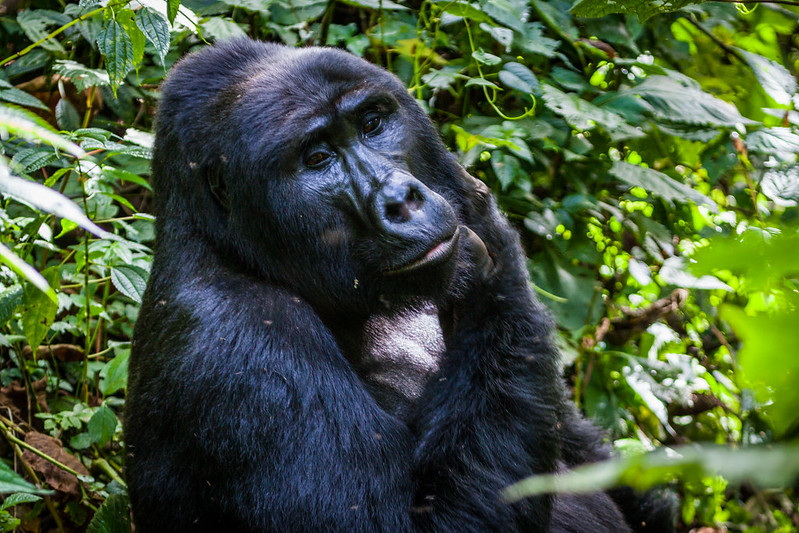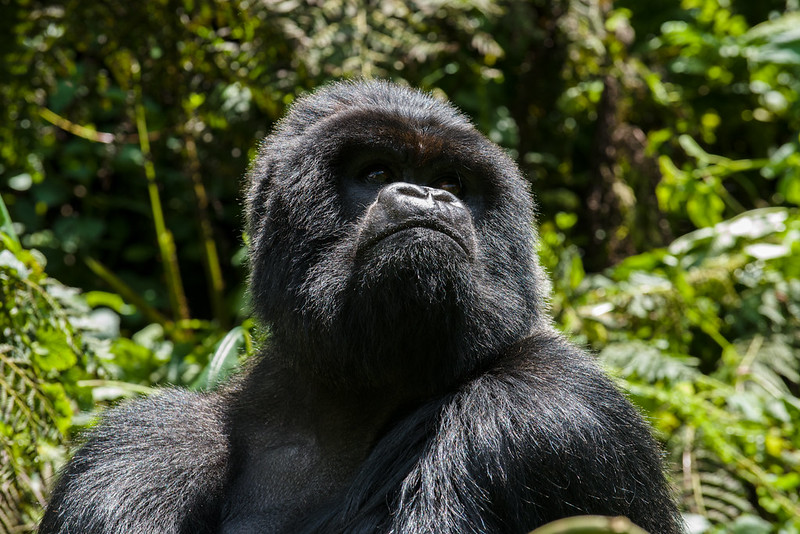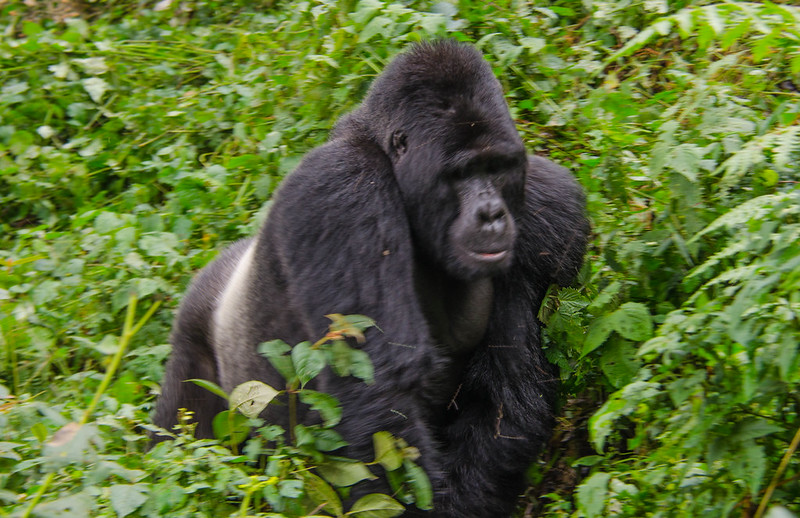Gorilla tracking in Uganda. Going on a gorilla tracking safari in Uganda is sure to…
What time are gorillas most active?
What time are gorillas most active?
Gorillas, majestic and intelligent creatures, are among the most fascinating primates on Earth. Found in the dense forests of Central and East Africa, they captivate wildlife enthusiasts and researchers alike. If you’re planning a gorilla trekking adventure or simply curious about these magnificent animals, understanding their daily behavior patterns is crucial.
A common question is, “What time are gorillas most active?” The answer lies in their natural rhythm, influenced by their environment, diet, and social structure. This article explores the activity patterns of gorillas, the factors shaping their behavior, and how this knowledge can enhance your gorilla trekking experience.
1. Understanding Gorilla Behavior
To appreciate when gorillas are most active, it’s essential to understand their overall behavior and daily routine. Gorillas are diurnal creatures, meaning they are active during the day and rest at night. Their activities typically revolve around eating, socializing, grooming, and resting.
1.1 Gorillas’ Daily Routine
Gorillas follow a predictable pattern every day, which includes:
- Early Morning Feeding: The day begins with foraging for food.
- Mid-Morning Movement: After feeding, they may move to another area in search of more food or a comfortable resting spot.
- Midday Rest: Gorillas rest for several hours during the hottest part of the day.
- Afternoon Activity: They resume feeding and social interactions.
- Evening Nesting: Before sunset, gorillas build nests in which to sleep.
2. When Are Gorillas Most Active?
Gorillas are most active during the early morning hours and late afternoon, with their peak activity typically occurring between 6:00 AM and 10:00 AM.
2.1 Early Morning Activity
- Foraging for Food: As the sun rises, gorillas begin their day by foraging for food. Their diet mainly consists of fruits, leaves, stems, and bamboo shoots, depending on the availability of resources in their habitat.
- Social Interactions: In the morning, gorillas engage in bonding activities such as grooming, playing, and vocalizing.
2.2 Midday Rest
- Rest Period: Gorillas rest during the heat of the day, usually between 11:00 AM and 2:00 PM. During this time, they conserve energy and may nap or engage in light grooming.
2.3 Afternoon Activity
- Resuming Foraging: After their midday rest, gorillas resume feeding and may move to new areas to find more food.
- Exploration: Gorillas often explore their habitat in search of diverse food sources or to avoid overusing specific areas.
3. Factors Influencing Gorilla Activity Patterns
Several factors influence gorillas’ activity levels and behavior, including environmental conditions, food availability, and group dynamics.
3.1 Temperature and Weather
- Gorillas are less active during extreme heat or heavy rain. Overcast or mild weather conditions often result in extended periods of activity.
- During cooler mornings, they are highly active as they forage and interact before the day warms up.
3.2 Food Availability
- The abundance and location of food sources dictate gorillas’ movements and energy expenditure. In regions with plentiful food, gorillas may spend less time moving and more time eating.
- Seasonal changes also influence their diet and activity. For instance, during fruiting seasons, gorillas may focus on specific areas rich in fruit.
3.3 Group Dynamics
- Gorilla groups, or troops, are led by a dominant male known as a silverback. The silverback’s decisions, such as when to move or rest, influence the activity patterns of the entire group.
- Social interactions, such as playing among juveniles or grooming between group members, often occur during the group’s active hours.
4. Why Knowing Gorilla Activity Matters for Trekking
For travelers embarking on a gorilla trekking adventure, understanding the activity patterns of gorillas is essential for a rewarding experience.![]()
4.1 Timing Your Trek
- Gorilla trekking typically begins in the early morning, aligning with the gorillas’ most active period. Trekkers can observe them foraging, interacting, and engaging in their daily routines.
- Early morning treks also allow for cooler temperatures, making the hike through dense forests more comfortable.
4.2 Observing Natural Behavior
- Witnessing gorillas during their peak activity periods provides insight into their natural behavior. Whether it’s a silverback asserting dominance, juveniles playing, or mothers nurturing their young, these moments are best observed when the gorillas are active.
4.3 Photography Opportunities
- For wildlife photographers, early morning light combined with active gorillas creates ideal conditions for capturing stunning images.
5. Tips for a Successful Gorilla Trekking Experience
To make the most of your trek and observe gorillas at their most active, consider these tips:
5.1 Start Early
- Trekking often begins early in the morning, with groups setting out around 7:00 AM. Arrive on time to maximize your chances of seeing gorillas during their most dynamic period.
5.2 Be Physically Prepared
- Trekking through dense forests and steep terrain requires stamina. Ensure you’re in good physical condition and bring appropriate gear, including sturdy hiking boots and a rain jacket.
5.3 Follow Guidelines
- Adhere to the rules set by park authorities, such as maintaining a safe distance from the gorillas and following your guide’s instructions. This ensures both your safety and the gorillas’ well-being.
5.4 Stay Patient and Observant
- Gorillas may move or rest unpredictably. Be patient, and you’ll be rewarded with unforgettable moments of interaction and observation.
5.5 Respect Their Habitat
- Avoid loud noises, sudden movements, or littering, as these can disturb the gorillas and their environment.
6. Where to Go Gorilla Trekking
Gorilla trekking is offered in three countries: Rwanda, Uganda, and the Democratic Republic of Congo (DRC). Each destination offers unique experiences:
6.1 Rwanda
- Best known for its luxury trekking experiences in Volcanoes National Park.
- Shorter trek durations and easy accessibility make it ideal for travelers seeking a premium experience.
6.2 Uganda
- Home to Bwindi Impenetrable National Park and Mgahinga Gorilla National Park.
- Offers diverse trekking routes and a larger gorilla population, often at a lower cost than Rwanda.
6.3 DRC
- The most adventurous option, with trekking available in Virunga National Park.
- Attracts intrepid travelers seeking an off-the-beaten-path experience.
Gorillas are most active during the early morning and late afternoon, making these the best times for observation. Their diurnal nature, combined with their predictable daily routines, provides an incredible opportunity for trekkers to witness these gentle giants up close in their natural habitat.
If you’re planning a gorilla trekking adventure, timing your trek to align with their activity patterns ensures an unforgettable experience. Whether you choose Rwanda, Uganda, or the DRC, understanding gorilla behavior will enhance your journey and deepen your appreciation for these extraordinary creatures.
Embark on your trek early, stay patient, and prepare to be awed by the remarkable world of mountain gorillas.


